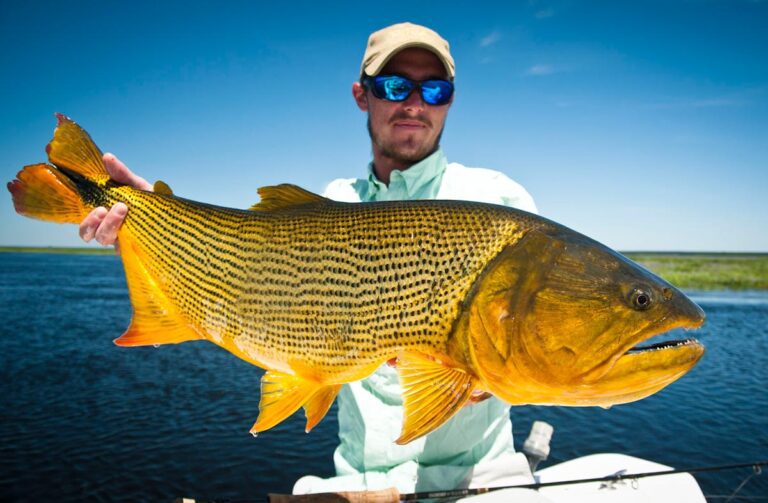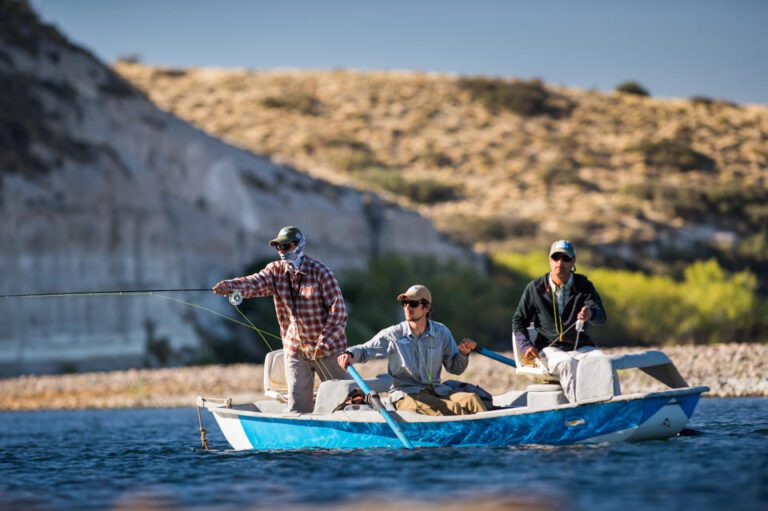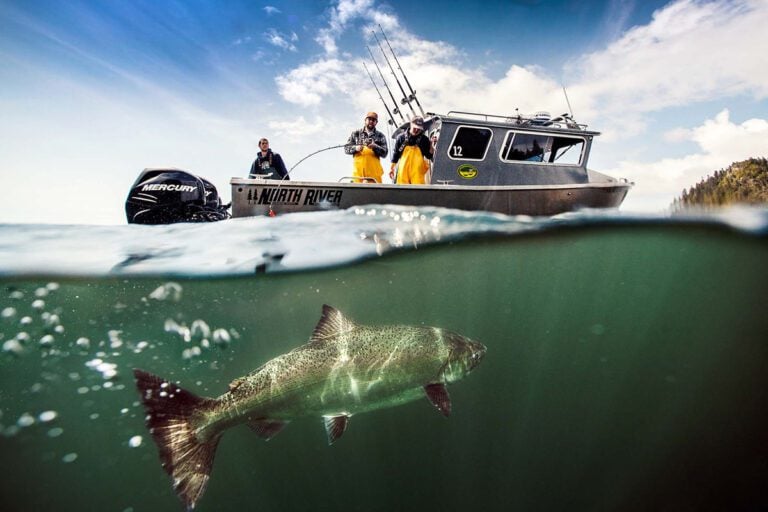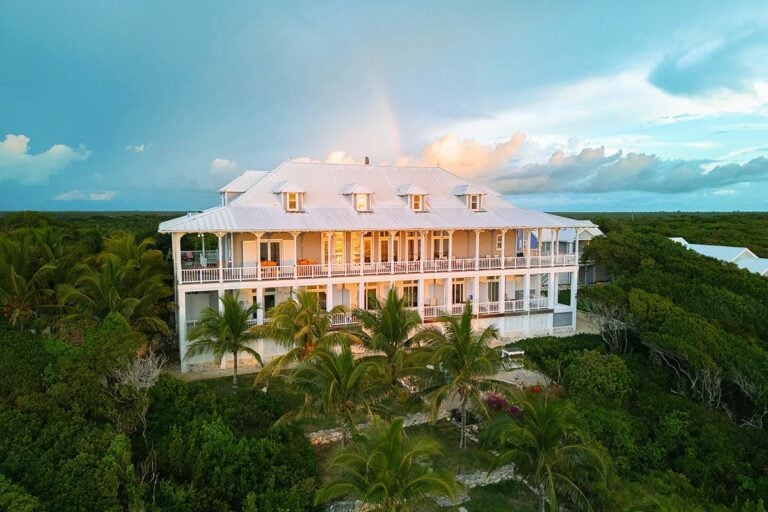Tigerfish occupy a place in the fly fishing imagination that borders on myth. Their steel-trap jaws, serrated teeth, and blistering runs have earned comparisons to saltwater species more than to anything typically found in rivers. Yet unlike tarpon or giant trevally, the tigerfish exists almost entirely within Africa’s great freshwater systems.
For the fly fisherman, the pursuit is as much about immersion in wild places as it is about fish. The rivers where tigerfish thrive are not only remote, they are deeply tied to Africa’s ecological fabric.

At its core, fly fishing for tigerfish isn’t complicated—you’re casting heavy streamers, stripping fast, and setting hard when the take comes. To follow them with a fly rod is to step into landscapes where elephants graze riverine meadows, hippos push wakes across channels, and crocodiles share the same currents as the fish you are casting to.
Pro Tip: If you’re fishing the Mnyera or Ruhudji Rivers in Tanzania, you will almost certainly see hippos in the water. While you’re fishing from a skiff or on foot near the banks, it’s common to see their nostrils and ears breaking the surface, or to hear the unmistakable grunts and bellows that carry across the water.
Range & Waters
Tigerfish (Hydrocynus vittatus and its larger cousin, Hydrocynus goliath) are widely distributed across sub-Saharan Africa. The species favors large river systems with both flowing current and ample structure—cut banks, logjams, boulders, and sandy drop-offs where baitfish congregate.
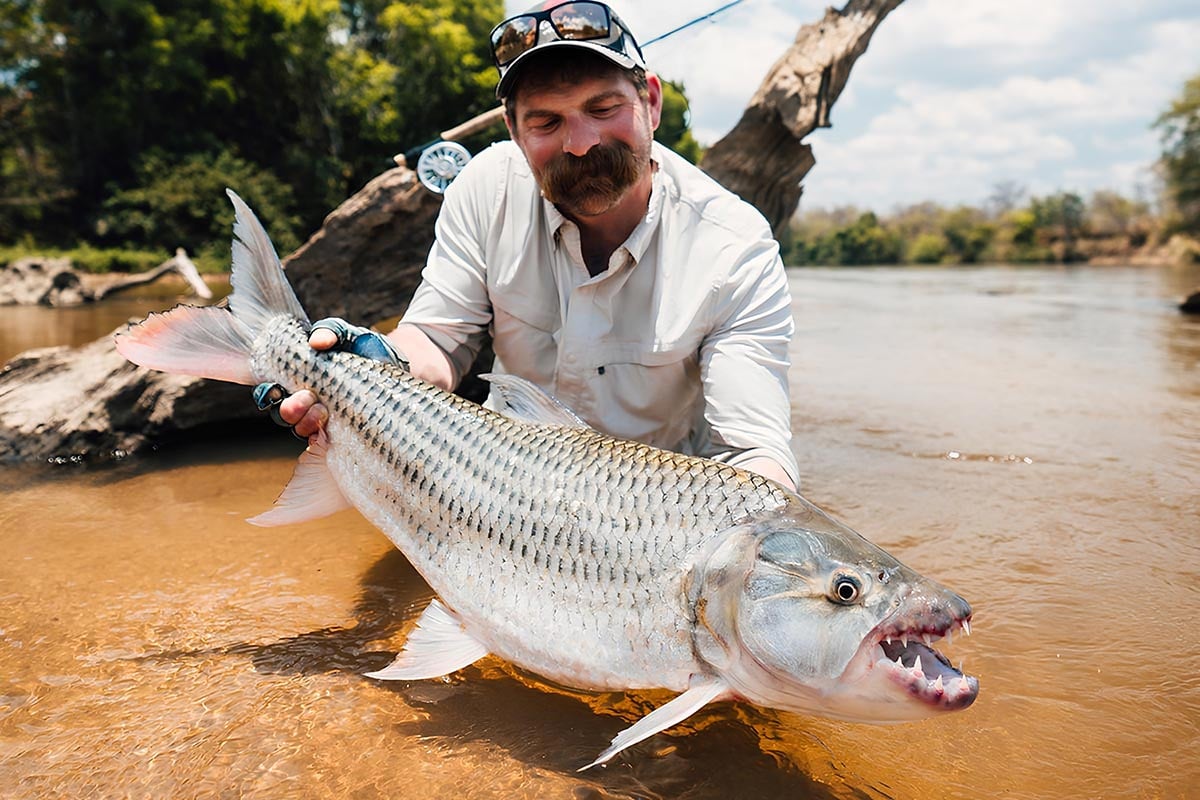
In southern Africa, tigerfish are encountered in the Zambezi and its tributaries, in Namibia’s Caprivi Strip, and in Botswana’s Chobe. Farther north, the Congo River basin is home to the Goliath tigerfish, a creature of outsized proportions and reputation.
And in East Africa, the Mnyera and Ruhudji Rivers of Tanzania offer one of the most carefully managed trophy fisheries in existence—an experience highlighted at Dhala and Samaki Tigerfish Camp.
Why the Fly Rod?
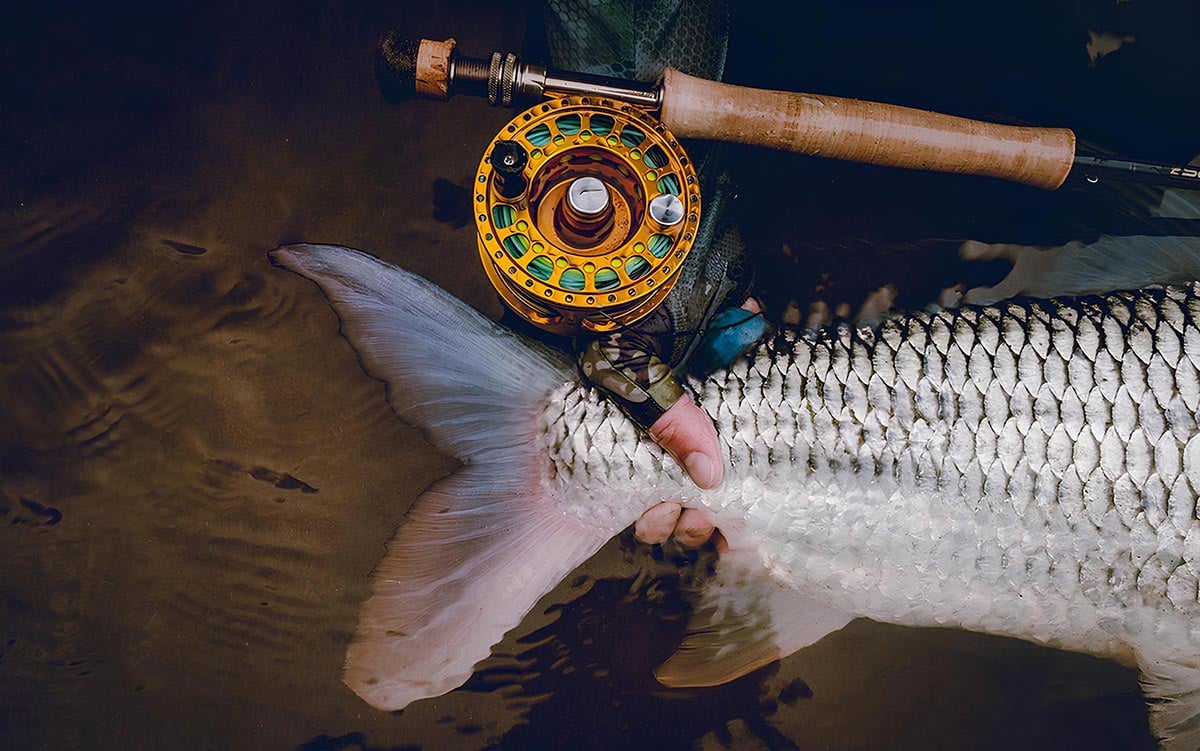
Along the rivers where tigerfish thrive, local fishermen have long relied on proven methods—trolling spoons, throwing spinners, or drifting live bait—that put food on the table and reflect generations of practical knowledge about these rivers. The fly rod, however, changes the equation. Heavy lines, oversized streamers, and the need to strip-set through a bony jaw make every take a test of preparation. The challenge isn’t simply to hook one, but to stay connected through the cartwheeling leaps that follow.
For anglers who have already logged days chasing dorado in South America, or who have stalked GTs across sand flats and coral edges, tigerfish deliver a different kind of theatre. Their aggression is instantaneous. One moment a dark tongue of current slides past a sandbar, the next your fly is hit with a ferocity that feels less like a take and more like an attack.
Scale & Aggression
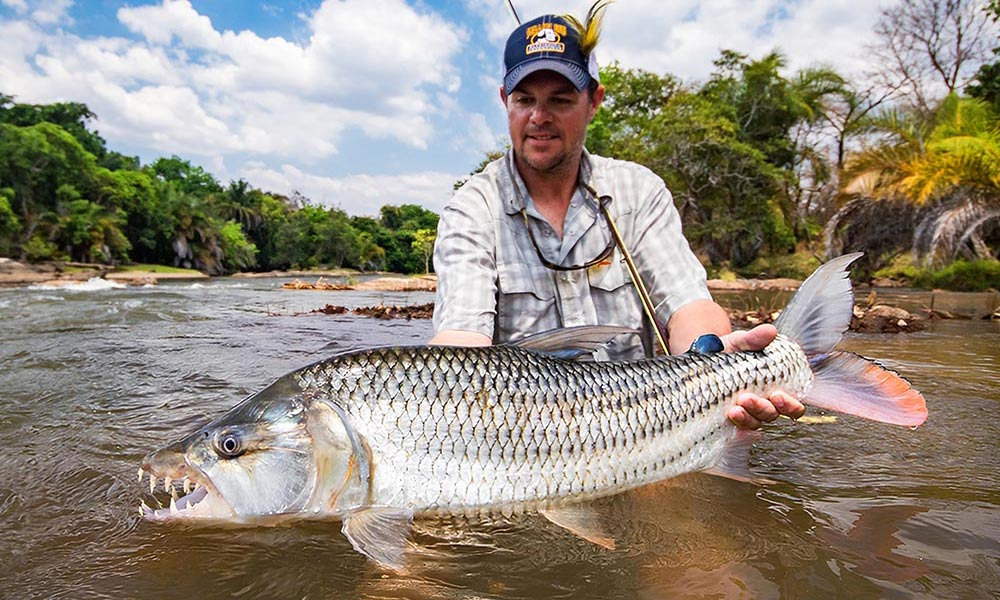
Tigerfish vary widely in size depending on the system. Average fish in many rivers run 3 to 6 pounds—plenty to test tackle and skill. But in select waters like those of the Congo and Tanzania’s southwestern concession, double-digit fish are not just possible but expected.
Aggression is part of their identity. Scientists have documented feeding frenzies where tigers slash through bait schools, their jaws acting like shears. Folklore even attributes the Goliath Tigerfish with attacking crocodiles—stories that naturally continue to draw much interest, though hard evidence is scarce.
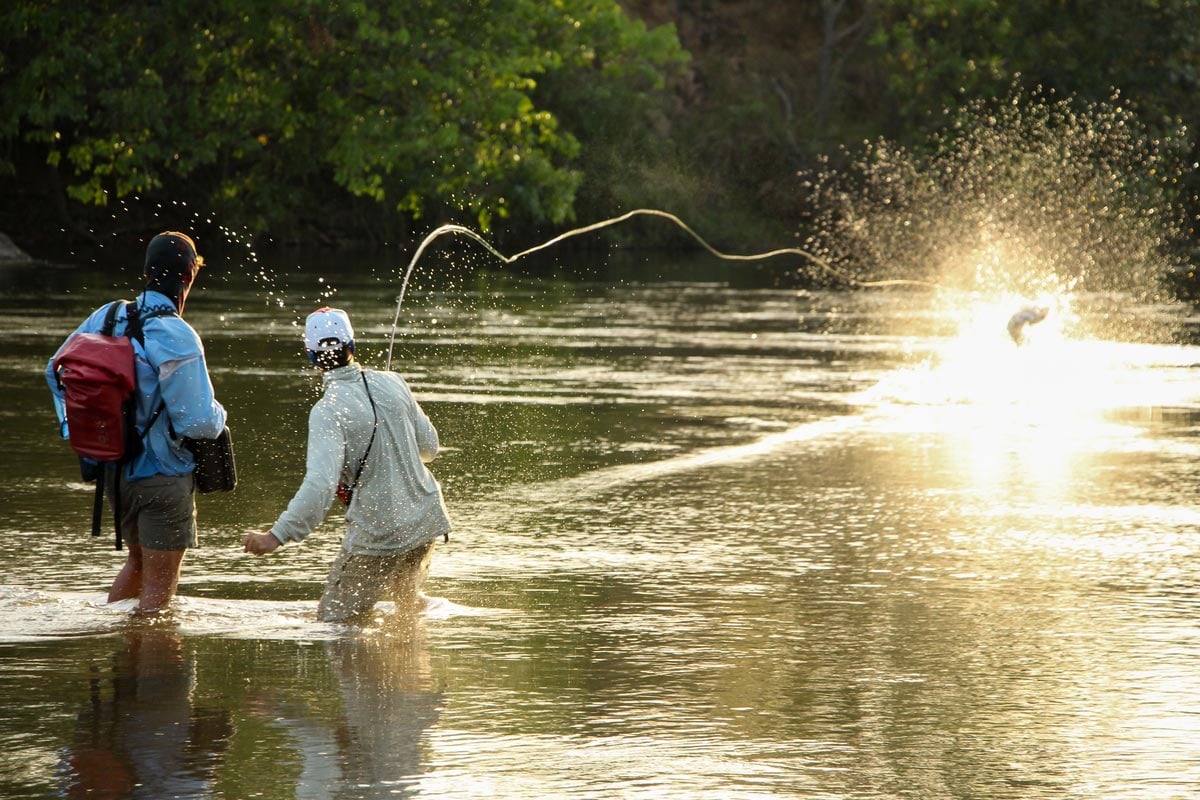
What is undeniable is their willingness to hammer flies stripped at speed, and their uncanny ability to shake free with violent head-turns in mid-air.
Places to Catch Tigerfish
Fly fishing for tigerfish is inseparable from the landscapes that hold them. Unlike trout streams or coastal flats, tiger waters are vast arteries of wilderness where the river itself feels alive. Each destination has its own texture.
- The upper Zambezi and its floodplain channels are where many anglers first encounter tigerfish. Here the fish are plentiful, though generally smaller, with 6 to 10 pounders considered good. Access is straightforward and safari lodges are plentiful, which makes the river convenient but also busy. Pressure from conventional anglers is common, and certain stretches feel more like a shared playground than a dedicated fishery. The experience combines casting at structure-lined banks with the backdrop of an iconic African river that eventually spills into Victoria Falls. The fishing, however, is often defined more by numbers than by size. Truly large tigerfish are the exception rather than the expectation.
- Botswana’s Okavango Delta, a mosaic of channels and floodplains, is a seasonal fishery where water levels dictate everything. When the flood is right, the setting is unforgettable—tailing elephants in the reeds, mokoro dugouts sliding through narrow channels, and tigerfish slashing at bait along the edges. But timing is everything here: water that arrives early or late can scatter fish across miles of floodplain, leaving anglers chasing opportunity more than consistency.
- The Chobe, farther east, delivers the drama of immense hippo pods and wildlife concentrations unmatched anywhere in Africa. Yet those same elements make fishing access more limited, with certain beats left unfished for safety. Add in the presence of general tourism traffic—boats filled with safari-goers drifting the same channels—and it can feel less secluded than a dedicated, managed fishery. Our Take: It’s a spectacular place to see Africa’s rivers, but for intrepid anglers set on hunting large tigerfish with a fly, Tanzania offers a more focused and reliable stage.
- For those who dream of outsized predators, the Congo is the domain of the Goliath tigerfish. Yet this is a fishery that tests more than tackle: Access requires navigating remote regions where travel is unpredictable, logistics are expensive, and reliable infrastructure is limited. Conditions on the river can be punishing, even for seasoned travelers—big water, strong current, and banks that are as hazardous as they are wild. Guiding infrastructure remains limited, with only a handful of exploratory operations able to support fly fishermen reliably. Add in political uncertainties, high travel costs, and the reality that long journeys often yield only a few true shots, and the Congo becomes a destination more for dreamers than for those seeking a focused tigerfish fly fishing trip.
- Among the patchwork of tigerfish fly fishing destinations, Tanzania holds a special place for those intent on combining serious fly fishing with a well-run, conservation-focused program. Dhala and Samaki Tigerfish Camp represents a polished, yet authentic window into what tigerfishing can be when wilderness, management, and guiding expertise align. If you want consistent double-digit tigerfish in a well-managed fly fishery, Tanzania is the destination.
Where Is The “Best” Place to Catch Tigerfish?
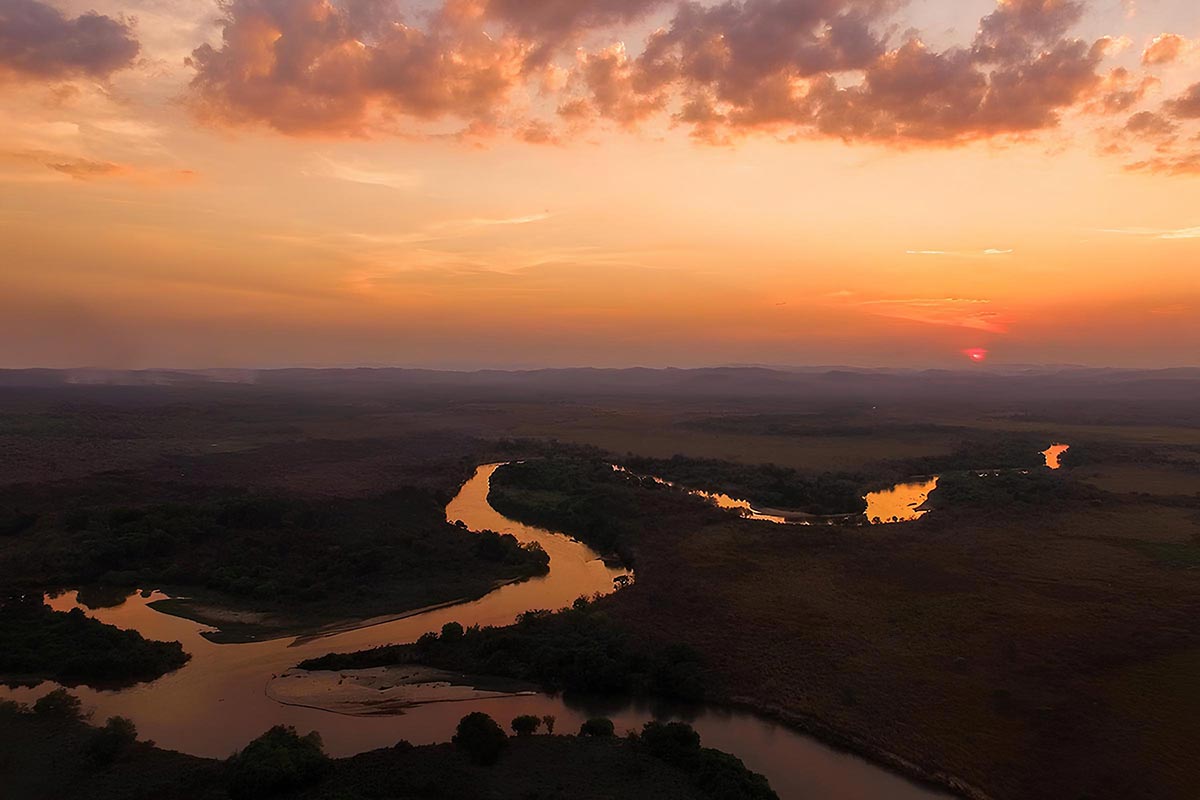
For anglers weighing where to commit their time, Tanzania offers not only a realistic chance at a true trophy but also an immersion in one of Africa’s last great river concessions. The pursuit is demanding, the environment raw, and the fish unlike any other freshwater species in the world.
Unlike the broad floodplains of southern Africa, Tanzania offers structured rivers with deep runs, rocky pockets, and downed timber—terrain where tigerfish grow large and fight hard.
It is this setting that Dhala and Samaki Tigerfish Camp has turned into a benchmark for fly anglers. These tented riverbank camps place you right on the Mnyera and Ruhudji, with the sound of flowing water and bushveld wildlife never far from earshot. Days are long and physical, but evenings end with hot showers, real beds, and dinners taken under canvas or out beneath the stars.

Dhala serves as the main base—six en suite tents set above the Mnyera, with a library, bar, and a fly-tying bench where patterns are improvised late into the night. Samaki, smaller and deliberately off-grid, sits shaded by forest on the Ruhudji.
Here, dining is often alfresco on a sandbank, with the river sliding past only steps away.
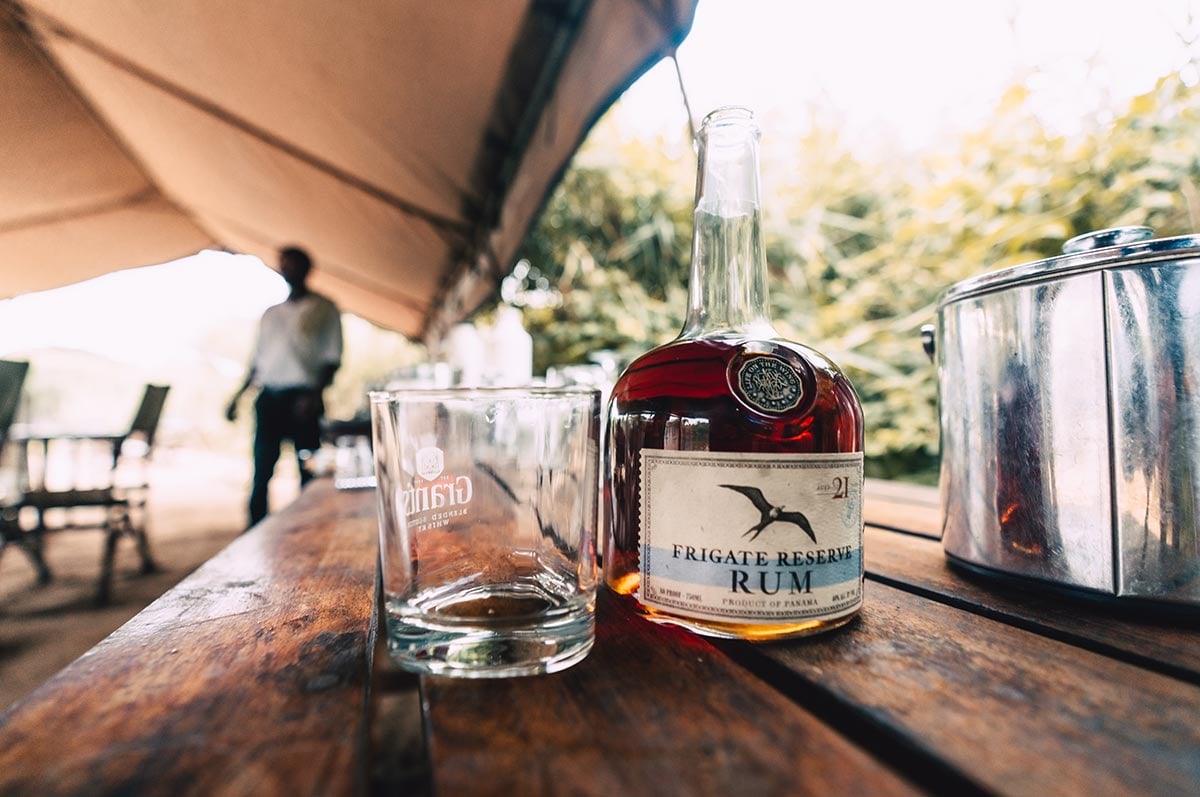
The rhythm is simple: fish hard by day, return to camp at dusk, trade stories with a drink in hand, and let the African night settle around you.
It’s a balance between immersion and comfort that suits the place—enough refinement to keep you rested, energized, and refreshed, but never so much that you forget you are in the middle of one of Africa’s wildest freshwater fisheries.
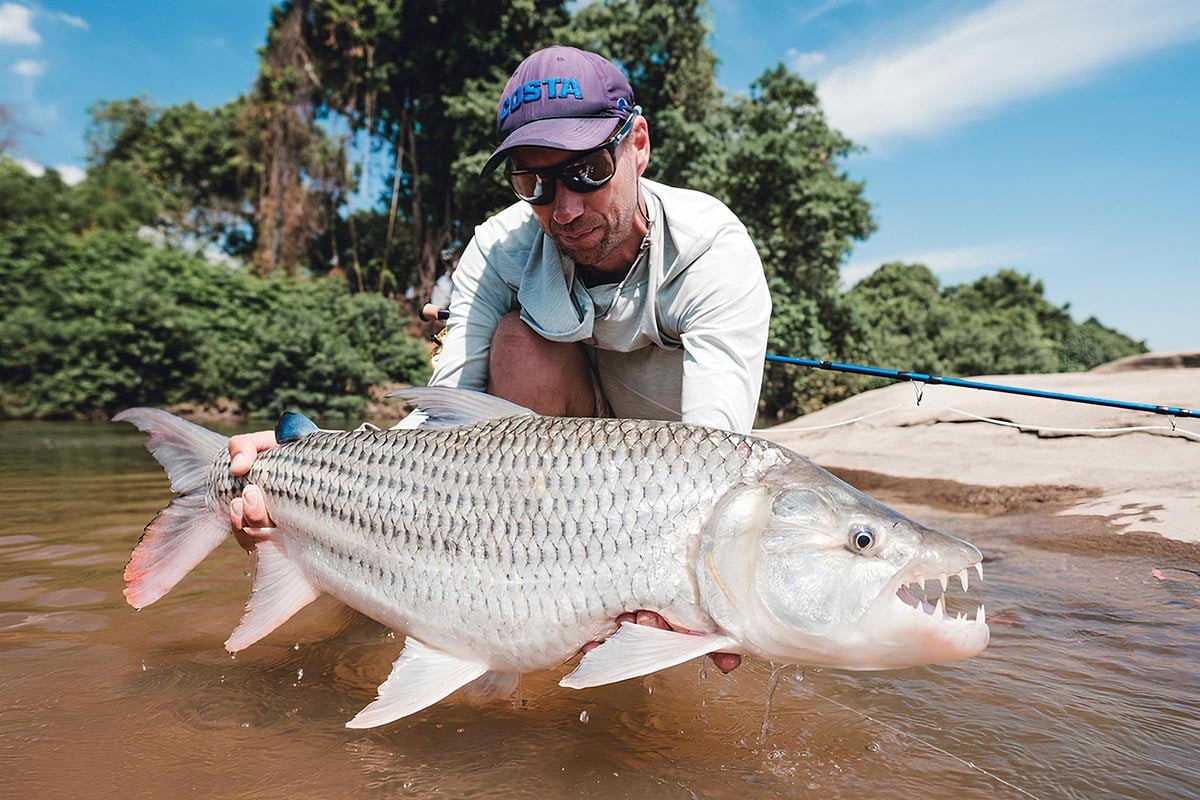
Trips here are about more than catching—they are about immersion in a pristine concession where fishing pressure is tightly managed and the average size of tigerfish rivals anywhere on the continent.
Final Thoughts
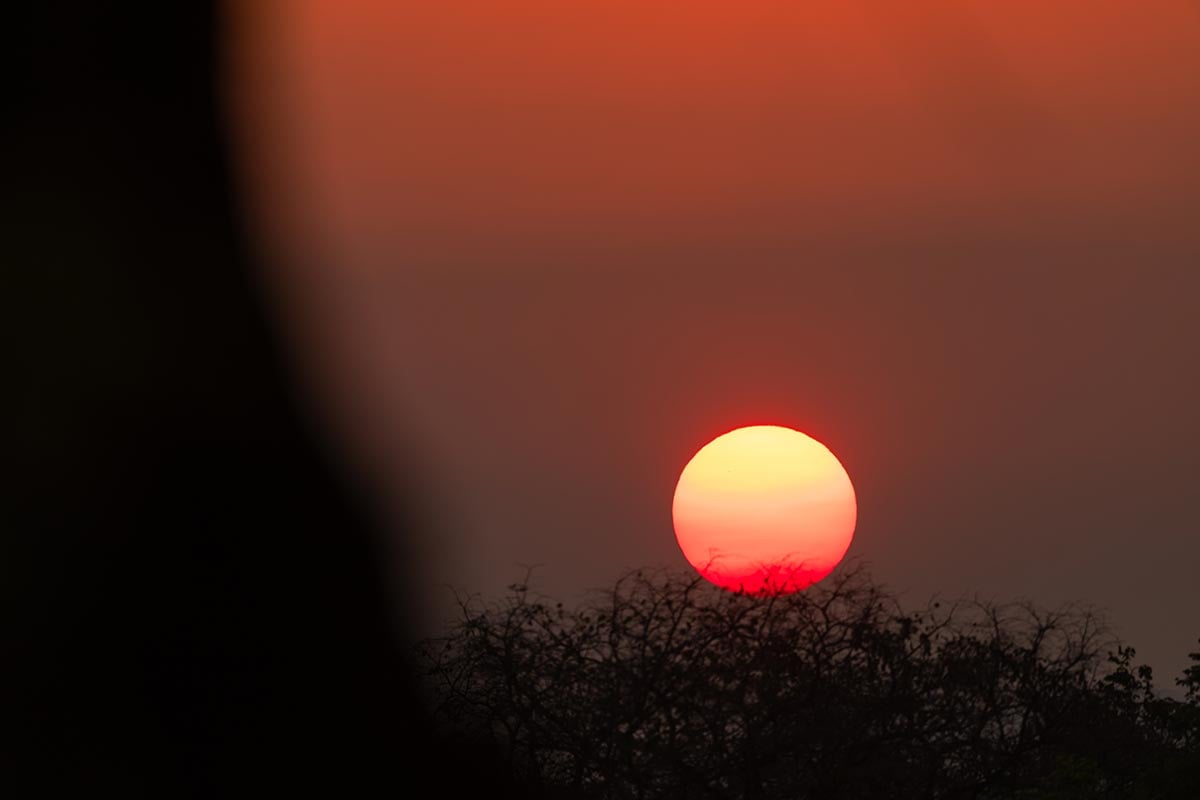
Across Africa, tigerfish are scattered in storied waters—the Zambezi with its broad floodplains, the Okavango and Chobe with their shifting channels, the Congo with its myths of Goliaths. Each has its appeal, but each comes with trade-offs of scale, seasonality, or access.
What sets the Mnyera and Ruhudji of Tanzania apart is their consistency. These rivers produce tigerfish of a size and strength that most anglers elsewhere will only hear about, and they do so in a setting that is both protected and carefully managed. Staying at Dhala and Samaki places you at the center of this fishery, close to the water and under the care of guides who live these rivers season after season.
Eight rods a week over a brief 12-week window ensures that pressure remains low, fish remain aggressive, and the experience retains its sense of exclusivity. It’s a program refined over years until only the essentials remain: hard fishing, clean rivers, and the kind of evenings around a fire that remind you why you came.
For those who travel to fish not just for numbers but for an encounter that feels raw, rare, and absolutely singular, Tanzania belongs near the top of the list.
▶ Weighing when to go and where to stay? The season is short and space is limited. Explore the details, check dates, and set aside your own time for fly fishing Tanzania at Dhala and Samaki Tigerfish Camp.
About This Article: FishingExplora’s journal content is written by our in-house editorial team. Passionate about fishing and travel, we focus on producing informed, experience-driven articles that support anglers exploring top-tier angling destinations worldwide. Meet the author.
Latest Journal Posts
No results available
Journal Categories
Latest Fishing Lodges
No results available
Premium Fishing Lodges

